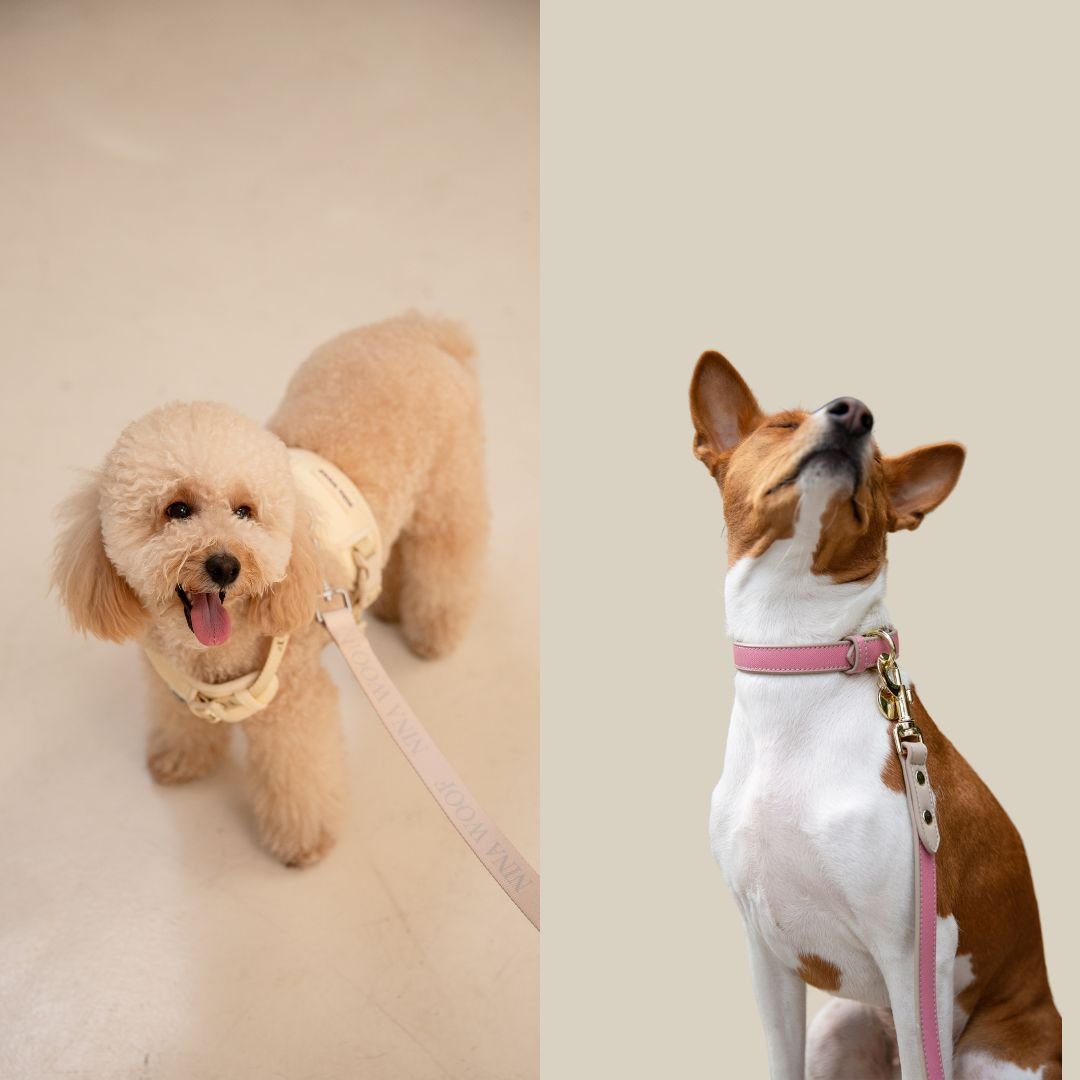Decoding Pet Gear: Harness or Collar – The Ultimate Guide to Choosing Wisely
- by Sarai Da Silva
-

Decoding Pet Gear: Harness or Collar – The Ultimate Guide to Choosing Wisely
As pet parents, we all want the best for our pets. One common dilemma many of us face is whether to opt for a classic collar or delve into the world of harnesses. Both serve distinct purposes and offer unique benefits. In this comprehensive guide, we'll unravel the mysteries of dog gear, exploring when to use a harness or a collar, and why both have their places in the toolkit of a responsible pet parent.
Understanding the Basics

Collars: Traditional Yet Timeless
Collars have been a staple in pet ownership for centuries. They are simple, lightweight, and come in various materials, from nylon to leather. A dog collar is typically worn around the neck and serves as a platform for identification tags and leashes.
Harnesses: Innovation for Enhanced Control
Harnesses, on the other hand, have gained popularity for their innovative design. Unlike collars, a dog harness distributes pressure across the chest and shoulders, providing more control, especially for dogs prone to pulling. They are often recommended for smaller breeds and dogs with respiratory issues.
Knowing When to Use Each

Everyday Strolls: Collar Convenience
For the daily neighborhood stroll or a quick potty break, a collar is a convenient choice. It allows for quick leash attachment and easy control in familiar environments. Plus, it's a great platform for displaying your pet's identification.
Outdoor Adventures: Opting for a Harness
When venturing into more adventurous terrains, a harness becomes invaluable. The even distribution of pressure prevents strain on the neck, making it an ideal choice for hikes, runs, or any activity where your dog might be prone to pulling.
Unraveling the Purpose
Collars: The Identity Emblem
Collars serve a crucial role in pet identification. They are the go-to accessory for attaching ID tags, rabies vaccination tags, and other essential information. In emergencies, a collar with visible identification can be a lifesaver.
Harnesses: Training Support and Enhanced Control
Harnesses offer a different kind of utility. Beyond identification, they act as valuable training tools. The chest attachment point discourages pulling, making them particularly beneficial for leash training. Additionally, harnesses provide enhanced control, ideal for excitable or larger breeds.
Prioritizing Comfort and Safety
Collars: Simple Comfort
Collars, when fitted correctly, provide a comfortable, light-weight accessory for your pet. However, it's crucial to ensure the collar isn't too tight, causing discomfort or, conversely, too loose, risking accidental slip-offs.
Harnesses: Optimal Comfort and Safety
Harnesses shine when it comes to comfort. The even distribution of pressure prevents choking and reduces the risk of neck injuries, particularly for breeds prone to respiratory issues. The snug fit offers security without compromising on your pet's well-being.
Suitability for Different Breeds
Collars: Universal Appeal
Collars suit a broad range of breeds, especially those accustomed to leash walks. Smaller breeds and cats often find collars more accommodating due to their lightweight and unrestrictive nature.
Harnesses: Tailored Solutions
Harnesses come into their own for specific breeds. Dogs with respiratory issues, like pugs or bulldogs, benefit from the lack of pressure on the neck. Additionally, dogs with a tendency to pull are better controlled with a harness.
Balancing Training Support and Security
Collars: Time-Tested Security
Collars provide a secure attachment point for leashes, ensuring your pet stays connected during walks. However, they might not be the ideal choice for dogs that tend to pull or have respiratory concerns.
Harnesses: Optimal Security
Harnesses offer optimal security, particularly with back and front attachment points. The front attachment deters pulling, while the back attachment provides control during walks. This dual control mechanism is a game-changer for pet parents.
The Pet Gear Dilemma: Collar vs. Harness?
Choosing between a collar and a harness ultimately depends on your pet's individual needs and your lifestyle. In many cases, pet owners find value in having both, using collars for daily walks and harnesses for more challenging adventures.
Internal Links for In-Depth Insights:
-
Learn more about dog harnesses at Nina Woof.
-
Explore our range of dog collars designed for style and safety.
-
Discover the purpose behind Nina Woof's commitment to pets and the planet.
Conclusion
In the harness versus collar debate, there's no one-size-fits-all solution. Each has its time and place, and understanding the nuances of both allows you to make informed choices. Whether it's the classic simplicity of a collar or the innovative design of a harness, what matters most is your pet's comfort, safety, and your ability to enjoy countless adventures together.
FAQs: Unveiling Answers to Your Curiosities
1. How Do I Introduce My Pet to a Harness for the First Time?
Introducing a harness requires patience. Let your pet sniff and explore the harness before attempting to put it on. Reward them with treats and positive reinforcement for a stress-free experience.
2. Can My Cat Wear a Harness Too?
Absolutely! Cats can be harness-trained for outdoor adventures. Start indoors, allowing your cat to get used to the harness gradually. Use treats and play to create positive associations.
3. Is It Normal for My Dog to Scratch at the Harness?
Some dogs may initially scratch or try to remove the harness. This is normal behavior as they adjust to the new sensation. Gradually increase the time your pet wears the harness for better tolerance.
4. Should I Choose a Collar or Harness for a Puppy?
Puppies can start with a lightweight collar for identification. As they grow, transitioning to a harness provides better control and prevents strain on the developing neck muscles.
5. Can I Use a Harness for All Dog Breeds?
Yes, harnesses are suitable for all dog breeds. However, choose a style that accommodates your dog's specific needs, considering factors like size, activity level, and any breed-specific health concerns.
In the end, the key is to make the gear choice based on your pet's individual characteristics and your intended activities. Happy walking!





